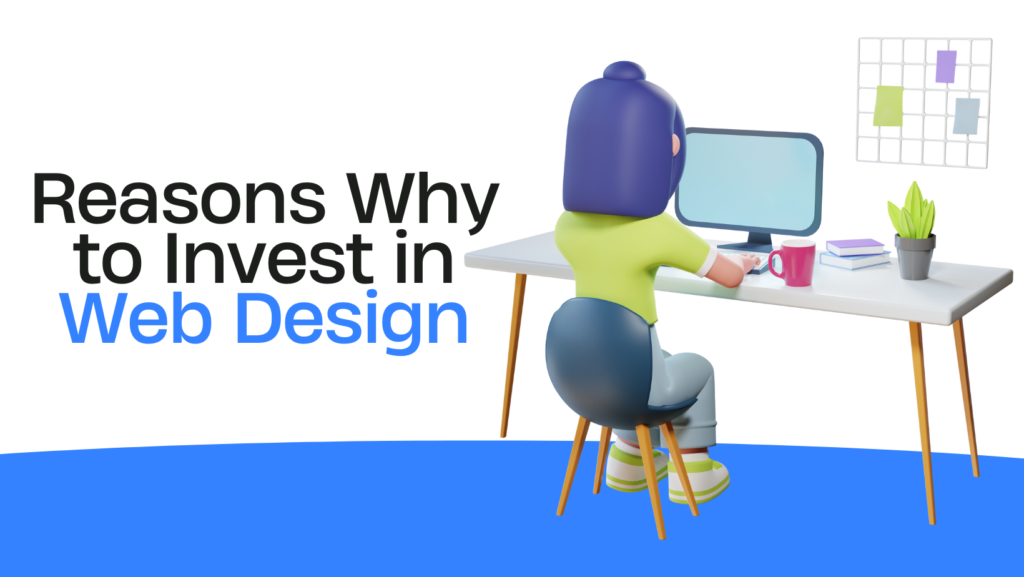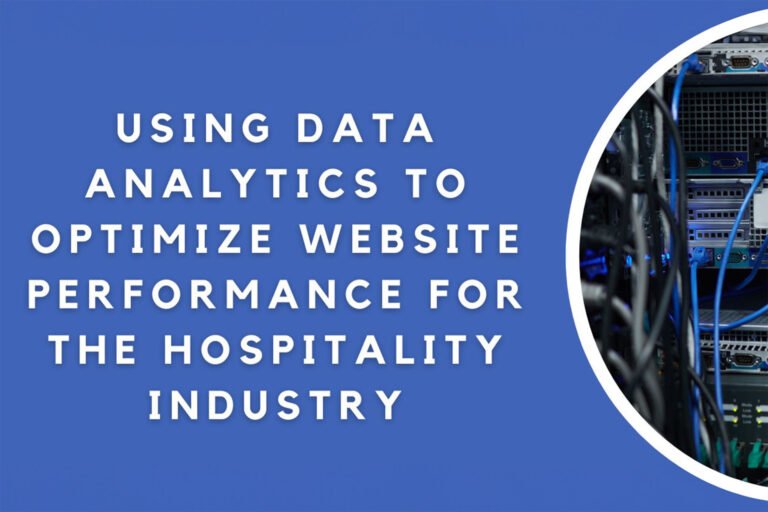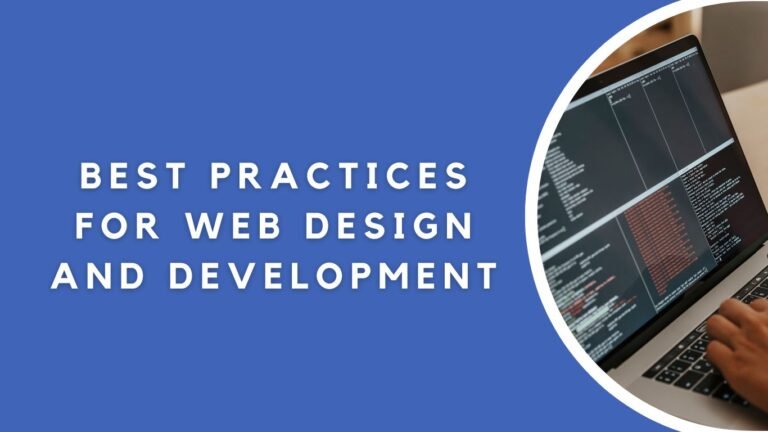Reasons to invest in web design and online presence are important for organizations of all sizes in the modern digital world. It acts as a digital shop and enables you to communicate with a large audience worldwide. An internet presence allows potential clients to locate you, learn about your company, and reach you.
How Web Design Contributes to Brand Visibility
Building Credibility and Trust
Internet users have become increasingly discerning, and a poorly designed or outdated website can create doubt about the reliability of your business. A well-structured, user-friendly, and attractive website communicates professionalism and competence. It provides:
- A positive user experience.
- Making visitors feel more confident.
- Purchasing products or services.
- Sharing their personal information when necessary.
A well-designed website is a testament to your commitment to quality and excellence, building trust, and long-lasting relationships with your audience.
Improved SEO Performance
The Relationship Between Web Design and SEO
Web design and search engine optimization (SEO) are linked, and a well-designed website can significantly impact your SEO performance. Search engines like Google consider various aspects of web design when determining how to rank a website. Elements that impact SEO are:
- site structure
- page load speed
- mobile responsiveness
- user experience
An effective web design not only provides a visually pleasing and user-friendly experience but also ensures that search engine bots can index your site easily.
How Web Design Can Boost SEO Efforts
Web design can have a positive impact on your SEO efforts in several ways:
- Mobile Responsiveness: A responsive design ensures your site is accessible to mobile users, improving mobile SEO rankings.
- Site Speed Optimization: Fast-loading pages enhance user experience and can result in higher search rankings.
- Clean Code and Crawling: Well-structured code and a clear site hierarchy make it easier for search engine bots to crawl and index your site.
- Quality Content Presentation: Effective design highlights quality content, making it more appealing to visitors and search engines.
- Mobile-First Design: Prioritizing mobile design aligns with Google’s mobile-first indexing, positively impacting rankings.
Increased Conversion Rates
How Web Design Impacts Conversion Rates
Web design plays a pivotal role in influencing conversion rates. Here are some ways in which it does so:
- User Experience (UX): A well-designed website enhances the overall user experience, making visitors more likely to engage with your content or products and take desired actions.
- Call-to-Action (CTA) Placement: Strategic placement of CTA buttons, such as “Buy Now” or “Sign Up,” in a visually appealing manner can prompt users to take action.
- Trust and Credibility: A professionally designed website instills confidence in visitors, reducing their hesitation to purchase or provide information.
- Page Load Speed: Fast-loading pages prevent visitors from getting frustrated and leaving your site before converting.
- Mobile Responsiveness: A mobile-friendly design ensures that visitors on smartphones or tablets can easily navigate and convert to your site.
Clear Information Hierarchy: Invest in web design to establish a clear information hierarchy. Effective design highlights important information and guides users toward conversion points, reducing confusion and increasing conversions.
Keeping Up with Technological Advancements
The Role of Web Design in Adapting to New Technologies
Web design is pivotal in helping businesses adapt to and leverage new technologies. Here’s how:
- Responsive Design: As new devices with varying screen sizes emerge, responsive web design ensures that your website remains accessible and functional on all platforms. This adaptability is crucial for reaching smartphone users, tablets, and other emerging devices.
- Progressive Web Apps (PWAs): Web design can incorporate PWA principles, creating web applications that offer an app-like experience, including offline functionality and push notifications. PWAs respond to the growing use of mobile devices and can enhance user engagement.
- AI and Chatbots: Integrating AI-driven chatbots into web design can provide real-time customer support and personalized experiences. This keeps businesses at the forefront of AI advancements and enhances user satisfaction.
- Voice Search Optimization: With the rise of voice-activated devices like smart speakers, web design must consider voice search optimization. Structuring content and design elements to align with voice search patterns is crucial for maintaining visibility in search results.
- Security Integration: Web design should prioritize cybersecurity measures, especially as new threats and vulnerabilities emerge. Incorporating the latest security technologies and best practices helps protect both user data and your reputation.
User Experience Improvement: Invest in web design to improve user experience. Web designers can leverage new technologies like augmented reality (AR) and virtual reality (VR) to create immersive and engaging user experiences. This keeps your website on the cutting edge and caters to user expectations for innovative interactions.
Competitive Advantage
How a Well-Designed Website Sets You Apart
In this fiercely competitive landscape, a well-designed website can be a potent tool for setting your business apart.
Here’s how:
- First Impressions: A visually appealing and professionally designed website immediately differentiates your brand from competitors with outdated or unattractive web presences. A positive first impression is crucial for capturing user attention.
- Unique Brand Identity: Invest in web design to showcase your brand’s unique identity, values, and personality. A distinct and memorable online presence helps your business discover a niche and connect with a specific target audience.
- User Experience: A superior user experience, facilitated by intuitive navigation and user-friendly design, keeps visitors engaged and encourages them to explore further. This sets your website apart from those with confusing layouts or poor functionality.
- Content Quality: A well-designed website can effectively showcase high-quality content, such as informative blog posts, compelling product descriptions, and engaging multimedia. Informative and engaging content sets you apart as an authoritative and trustworthy source.
- Responsive Design: Ensuring your website is accessible on all devices sets you apart from competitors with non-responsive or mobile-unfriendly sites. This inclusivity appeals to users across various platforms.
- Performance and Speed: A fast-loading website sets you apart from competitors with sluggish sites, as users are likely to abandon slow pages. Speed and performance are integral to a positive user experience.
Cost-Effective Marketing
Long-Term Benefits of a Well-Designed Website
A well-designed website provides long-term benefits that extend well beyond the initial investment. Some of these enduring advantages include:
- 24/7 Accessibility: Your website is available to potential customers around the clock, even when your physical storefront or office is closed. This continuous accessibility allows for ongoing engagement and sales opportunities.
- Global Reach: With the internet’s global reach, your website can attract a worldwide audience, expanding your customer base beyond geographical constraints.
- Branding and Credibility: A professionally designed website enhances your brand’s credibility and professionalism, instilling trust in visitors. Over time, this trust can translate into customer loyalty and positive word-of-mouth referrals.
- Content Marketing: Your website serves as a platform for content marketing, allowing you to create and share valuable content that can attract, inform, and engage your audience over an extended period.
- Data and Analytics: Websites provide valuable data and analytics insights that enable you to refine your marketing strategies and make data-driven decisions. Over time, this data can lead to more effective and efficient marketing efforts.
- Adaptability: Web design allows for easy updates and adjustments to your online presence as your business evolves, ensuring that your website remains current and relevant.
Calculating the Return on Investment (ROI)
Calculating the ROI of web design involves assessing the initial investment and the ongoing benefits it generates. To calculate ROI, you can use the following formula:
ROI = (Net Profit from Web Design – Cost of Web Design) / Cost of Web Design * 100
Here’s how to break down the components:
Net Profit from Web Design: Invest in web design by calculating the additional revenue generated directly as a result of your website, considering factors like increased sales, leads, or customer retention. Deduct any associated costs, such as maintenance or digital marketing expenses, to gauge the true financial impact of your investment.
Cost of Web Design: This includes the initial investment in web design and development and periodic maintenance or updates.
Security and Trust
How Web Design Contributes to User Trust
Web design plays a crucial role in building and maintaining user trust. Here’s how:
- Visual Cues: Professional and aesthetically pleasing design signals competence and reliability. Conversely, a poorly designed or outdated website can raise suspicions about a company’s legitimacy.
- SSL Certificates: SSL certificates, indicated by “https://” in the URL and a padlock icon, encrypts data transmission between users and your website. This encryption fosters trust by ensuring that sensitive information remains private.
- Privacy Policies and Terms of Service: Clear presentation of privacy policies and terms of service demonstrates transparency and compliance with data protection regulations. Users appreciate knowing how their data will be handled.
Regular Updates: Maintaining a well-designed website includes keeping software, plugins, and security features up-to-date to patch vulnerabilities and protect against threats.
Invest in web design
Investing in web design is one of the most important decisions you’ll make for your business, as it sets the tone for your online presence, customer experience, and potential success. With effective tools such as content management systems, SEO experts, and UX designers, any business can harness its collective digital power to become successful.




